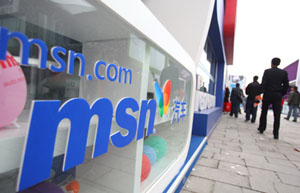Opinion
Higher inflation
(China Daily)
Updated: 2010-11-12 17:00
 |
Large Medium Small |
The surge in China's consumer price index (CPI) to a 25-month high in October should bring an end to premature optimism that the country would effectively ease inflationary pressure.
More importantly, it should also add to the resolve of Chinese policymakers to make greater efforts to fight inflation.
As China's economic growth has already slowed from 11.9 percent in the first three months of this year to 10.3 percent in the second quarter, there was a consensus among Chinese policymakers that inflationary expectations would diminish in coming months as a further fall in Chinese growth would considerably ease price pressures.
| |||||||
Now, a sharp increase of consumer inflation from 3.6 percent in September to 4.4 percent last month leaves Chinese policymakers no choice but to significantly increase efforts to cool inflation. Otherwise, rocketing prices will fuel dangerous asset bubbles and worsen the wealth disparity between the poor and the rich.
Domestically, a double-digit jump in the cost of food has been blamed as the driving force behind the October surge in consumer inflation.
On average, the price of food accounts for one third of the basket of goods used to calculate the country's CPI. That means, for low and middle-income families, they spend a proportionately larger share of their income on food. Hence, poor people will bear the brunt of food-led inflation.
If the country is to pursue inclusive growth and narrow the wealth gap, policymakers must do more to arrest food-led inflation as soon as possible.
Internationally, the new round of quantitative easing launched by the United States has already sent commodity prices through the roof, stoking inflation in many fast-growing developing countries.
It is far from clear if the international community will come up with measures to stop the world's largest economy from printing too much money in an untested bid to reflate its way out of recession.
The Chinese authorities certainly should try to prevent a flood of international capital inflating domestic consumer and asset prices.
It is reassuring that, on Wednesday, after raising its benchmark interest rate for the first time in nearly three years last month, the People's Bank of China has ordered commercial lenders to set aside more reserves for a fourth time this year to tighten liquidity.
The sharp rise in the value of the Chinese currency against the US dollar on Thursday also indicates that Chinese policymakers are ready to fight inflation with all necessary tools.
In face of persistent pressures on prices, all such efforts, if not more, are badly needed.




